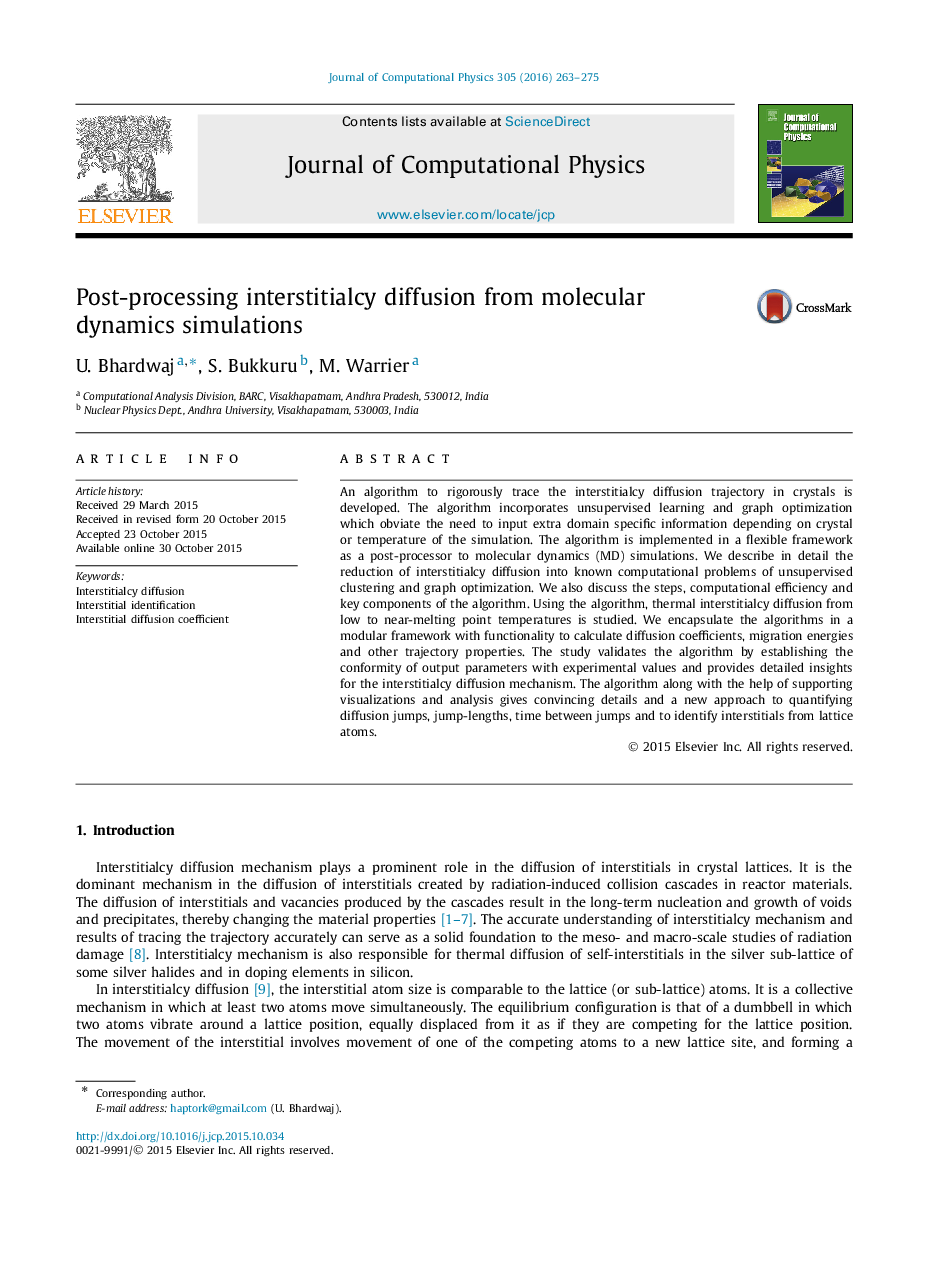| Article ID | Journal | Published Year | Pages | File Type |
|---|---|---|---|---|
| 6930849 | Journal of Computational Physics | 2016 | 13 Pages |
Abstract
An algorithm to rigorously trace the interstitialcy diffusion trajectory in crystals is developed. The algorithm incorporates unsupervised learning and graph optimization which obviate the need to input extra domain specific information depending on crystal or temperature of the simulation. The algorithm is implemented in a flexible framework as a post-processor to molecular dynamics (MD) simulations. We describe in detail the reduction of interstitialcy diffusion into known computational problems of unsupervised clustering and graph optimization. We also discuss the steps, computational efficiency and key components of the algorithm. Using the algorithm, thermal interstitialcy diffusion from low to near-melting point temperatures is studied. We encapsulate the algorithms in a modular framework with functionality to calculate diffusion coefficients, migration energies and other trajectory properties. The study validates the algorithm by establishing the conformity of output parameters with experimental values and provides detailed insights for the interstitialcy diffusion mechanism. The algorithm along with the help of supporting visualizations and analysis gives convincing details and a new approach to quantifying diffusion jumps, jump-lengths, time between jumps and to identify interstitials from lattice atoms.
Related Topics
Physical Sciences and Engineering
Computer Science
Computer Science Applications
Authors
U. Bhardwaj, S. Bukkuru, M. Warrier,
